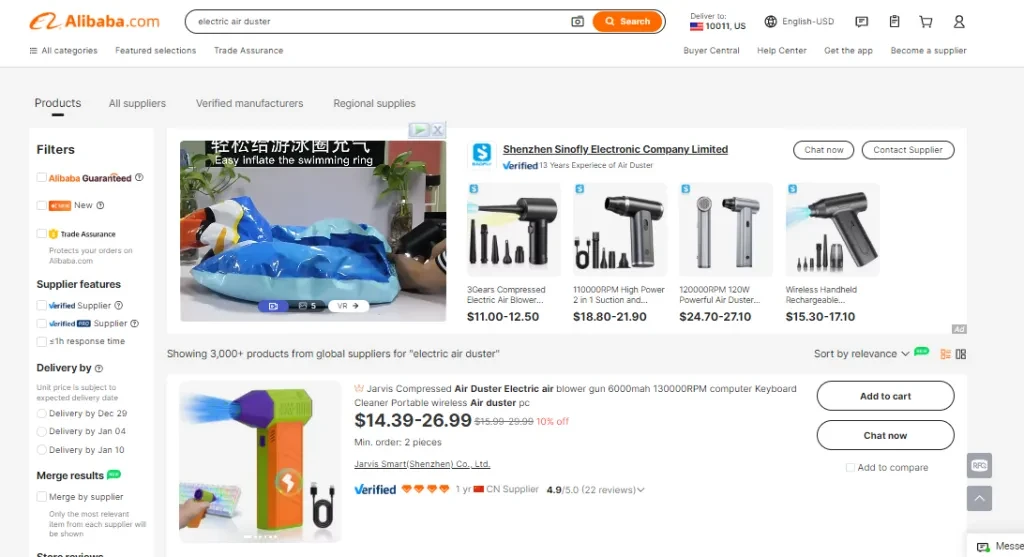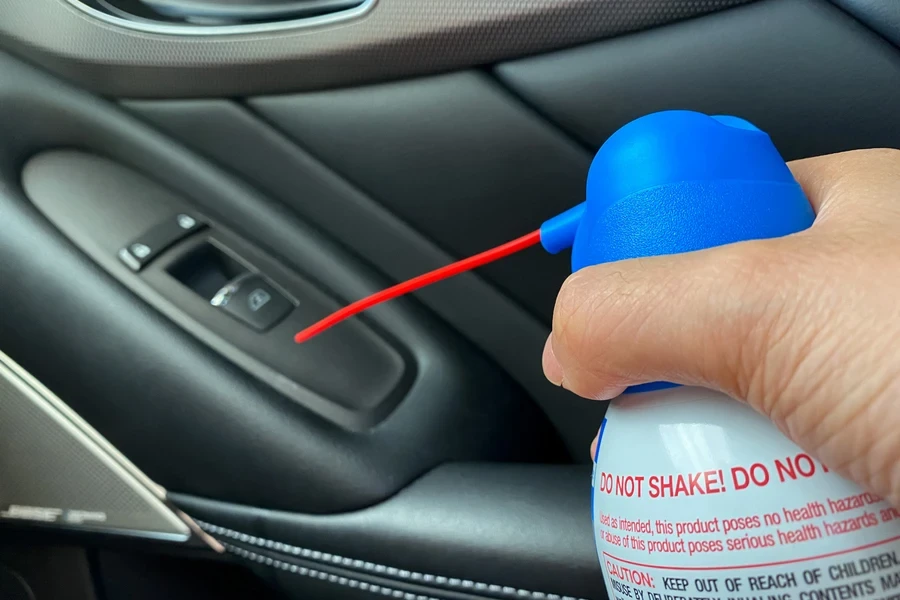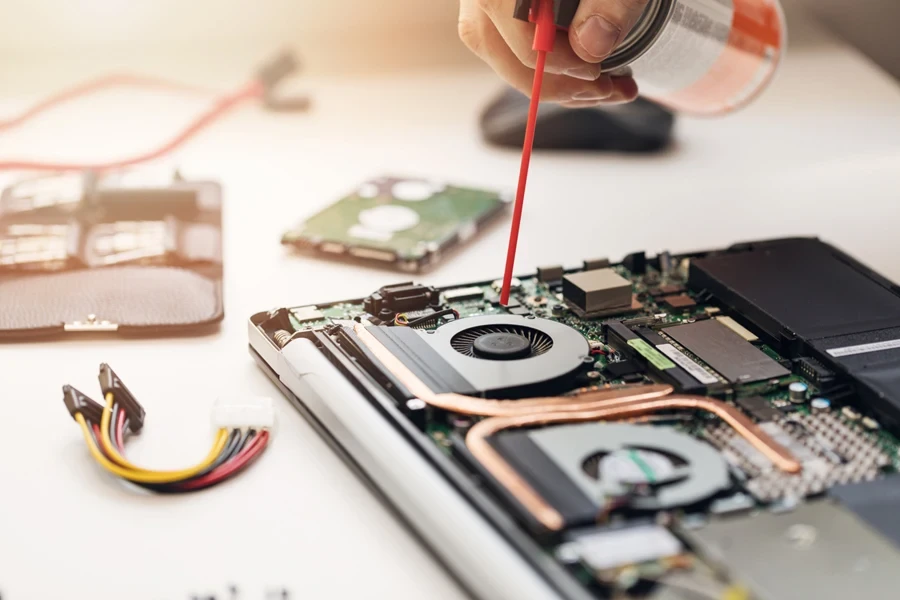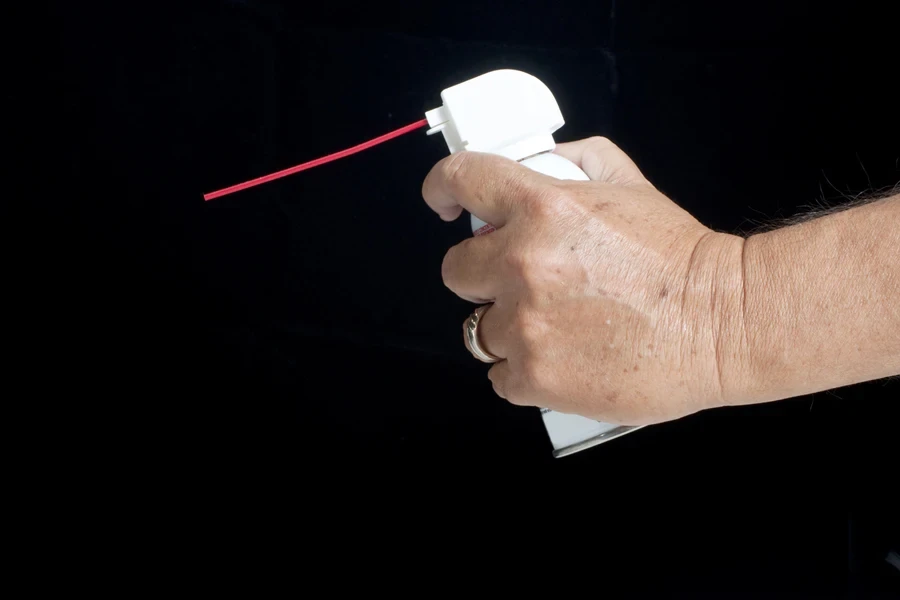Everything gets dirty over time, including electronics, office equipment, and other delicate surfaces. Because these things are fragile, consumers can’t use traditional cleaning methods, or they’ll damage sensitive items. Thankfully, that’s where compressed air dusters come in handy.
These tools have one unique ability: they can remove dust and debris without physical contact. This feature makes them the best way to clean sensitive equipment. However, offering the right compressed air duster isn’t as simple as stocking the first set retailers see.
Businesses must consider many things, from fill sizes to air type and performance specifications, before investing in these seemingly easy products. This guide will explore these factors, helping retailers choose the right compressed air dusters for their consumers in 2025.
Table of Contents
A quick look at the compressed air duster market
Compressed vs. electric air dusters: What are the differences?
What to consider when choosing compressed air dusters
Final words
A quick look at the compressed air duster market
Compressed air dusters are a huge part of the global air duster market, which experts predict will cross US$ 200 million by 2030, growing at a 4.6% compound annual growth rate (CAGR) from US$ 143 million in 2023. Experts say there has also been an increased demand for compressed air dusters thanks to more people using electronics. The rising remote work trend also supports this growth.
Compressed vs. electric air dusters: What are the differences?
Businesses can offer two types of air dusters: compressed (or canister-based) and electric models. Here’s a closer look at each option’s strengths and drawbacks.
Compressed (canister-based) air dusters

These are the products consumers are most familiar with. Manufacturers fill a pressurized canister with propellant gas, giving it the necessary airflow to push dirt and dust away. Canister-based air dusters are quite common in home or office workspaces.
What they offer
Compressed air dusters are lightweight and portable, making them convenient for quick cleaning. Since they don’t require external power sources, consumers can use them on the go or in areas without easy access to electricity. More importantly, they’re budget-friendly upfront, as most come in packs of 4 or 8, making them a great choice for occasional use.
Where they fall short
Compressed air dusters may be convenient, but they have some major flaws. For instance, consumers can’t refill them, so they must replace the canister once they empty the can. Also, these single-use products will lose pressure as the gas runs out, which may make them less effective. Although most compressed air dusters use environmentally bad fuels, manufacturers are already solving this by creating more eco-friendly options.
Electric air dusters

Electric air dusters are an excellent, sustainable alternative for anyone looking for a reliable, eco-friendly cleaning solution. Instead of gas, these devices use electric or battery-powered motors to generate enough airflow to remove dust and debris.
What they offer
One of this device’s biggest benefits is its reusability. Unlike compressed cans, electric air dusters only need electricity to generate air instead of replacement canisters. These air dusters also offer consistent airflow so that consumers won’t feel the lack of pressurized air. In addition, electric air dusters can come with adjustable speed settings, allowing users to control their cleaning intensity.
Where they fall short
Electric dusters are generally bulkier than compressed cans, making them less portable. They also have a higher upfront cost, making them a bigger investment for some consumers. Additionally, since they run on electricity or batteries, they may not be the best choice when consumers don’t have easy access to electricity.
What to consider when choosing compressed air dusters
1. Choosing the right fill size

This factor is very important, as it determines how much compressed air consumers will get from their canisters. Here’s a look at the different sizes.
| Fill size (ounces) | Description |
| Small fill (3.5 oz) | These dusters are perfect for quick, light cleaning tasks like dusting off a keyboard or cleaning camera lenses. However, their limited capacity means they run out quickly, making them less suitable for longer cleaning tasks. |
| Medium (8 oz) | Medium-filled canisters offer better air capacity, making them better for regular cleaning. They also have enough airflow for multiple uses but won’t last long for heavier cleaning tasks. |
| Large (10 oz and larger) | These compressed-air dusters offer enough air to handle extended cleaning. Although they will still run out, consumers will take longer before they switch to the next can. |
2. The can’s propellant
The compressed air duster’s fuel is crucial for its performance and safety. Traditional options like difluoroethane or tetrafluoroethane are effective but contribute significantly to greenhouse gas emissions. Thankfully, many manufacturers now use eco-friendly alternatives, like hydrofluorooelefins (HFOs), which deliver comparable results with lower environmental impact.
Safety is equally important. Retailers must ensure the dusters are non-flammable in case consumers use them around sensitive electronics or in high-temperature settings. Remind them always to use compressed air dusters in well-ventilated areas to avoid inhaling harmful gases.
3. Performance (pressure and airflow)

Consumers who care about cleaning power will look at pressure and airflow. Most consumer-grade compressed air dusters operate within the 50 to 90 PSI range, with higher levels delivering stronger air blasts. However, most canisters have the right amount of pressure to handle delicate electronics without damaging them.
4. Nozzle design and accessories
Nozzles are another big part of compressed air dusters. The best one for consumers will depend on their cleaning tasks. Hence, it’s a good idea to opt for options with different nozzles and extensions—they are way more versatile. Here’s what to consider:
- Precision nozzles: These are the more common options. Their narrow tips make them perfect for reaching tight spaces, like between keyboard keys or insider camera equipment.
- Extension tubes: Sometimes, precision nozzles won’t reach everywhere, so that consumers can use extension tubes. These are perfect for cleaning deep or hard-to-access areas, like air vents on large devices.
- Adjustable nozzles: These options are more flexible, allowing consumers to control airflow direction and intensity for different cleaning requirements.
5. Safety features

Since consumers will mostly use compressed air dusters around electronics, they will need some safety features. Removing dust and debris without physical contact is not enough; these tools should have anti-static properties to prevent pesky static buildup that could harm electronic components.
Non-toxic fuels are also important to ensure consumers (and pets) can use them safely, especially in enclosed spaces. Compressed air dusters with childproof safety locks are a great way to prevent accidental use for households with children.
Final words
Compressed air dusters are the go-to tool for cleaning electronics and hard-to-reach places. Although electric air dusters offer amazing benefits, they can’t replace their compressed counterparts. They simply lack the precision most consumers need from compressed air dusters.
That’s why compressed air dusters still make up most of the global market. So, now’s a great time to enter this market using this article as a guide, ensuring consumers get the perfect duster for their needs.





 Afrikaans
Afrikaans አማርኛ
አማርኛ العربية
العربية বাংলা
বাংলা Nederlands
Nederlands English
English Français
Français Deutsch
Deutsch हिन्दी
हिन्दी Bahasa Indonesia
Bahasa Indonesia Italiano
Italiano 日本語
日本語 한국어
한국어 Bahasa Melayu
Bahasa Melayu മലയാളം
മലയാളം پښتو
پښتو فارسی
فارسی Polski
Polski Português
Português Русский
Русский Español
Español Kiswahili
Kiswahili ไทย
ไทย Türkçe
Türkçe اردو
اردو Tiếng Việt
Tiếng Việt isiXhosa
isiXhosa Zulu
Zulu